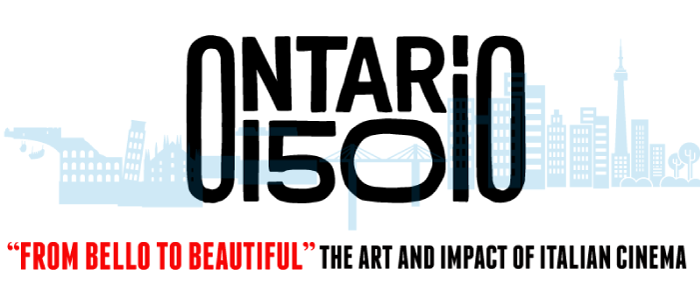Gabriele Scardellato
Director, Mariano A. Elia Chair in Italian-Canadian Studies-York University
Given that Italy and Canada, as newly-formed nation states, are about the same age, we can say that Italians have been travelling to and settling in this country from the date of its confederation 150 years ago. The largest influx of Italians to Canada, however, occurred after the Second World War, and this took place over a span of about 25 years, from 1950 to the mid 1970s. This can also be understood as the period of immigrant adjustment when those newly arrived worked hard to establish themselves and they did so with little time left over for cultural and related activities. Rather, it was the second generation in post-war Canada, the Canadian-born, or those who arrived here as the young children of those hardworking new arrivals, who emerged as distinctive voices in virtually all branches of the arts in Canada, including, in all aspects and genres of film making.
With very few exceptions, most of the film making – and here we include activities like directing, producing, script writing, acting and so forth – by those of Italian origin in Canada occurred from the 1970s and after, with a particular flourishing in the first two decades of the current century. The early outliers that appeared in the 1970s were, in fact, part of a much broader trend. This has been described as a type of cultural “renaissance” typically signalled in the field of literature by the publication of Pier Giorgio Di Cicco’s edited anthology of Italian-Canadian poetry, Roman Candles (1978). It was followed, in short order, by other anthologies, and by the works of novelists – Frank Paci, for example, who published the first volume of his trilogy, The Italians, in 1978 – and a very wide range of other artists including musicians, sculptors, painters, playwrights, actors, publishers and, of course, a number of scholars in various Canadian universities who began the careful and detailed study of Italians in Canada that continues to this day.
The early “outliers” mentioned above – including, for example, auteurs like Salvatore Greco and Tony Ianzelo who now are almost forgotten – in many regards set the stage for the film making that would follow. Salvatore Greco, for example, in his one-off short (28’), Franco: Story of an Immigrant, traced the unhappy life of an immigrant struggling to settle in post-WW II Toronto, forced to survive in a job well below his training. Ianzelo, on the other hand, tells the story of a widower, Antonio, and his fixation on remembering the Italy of his youth (Antonio, 1966; 28’, NFB). Other auteurs, in particular film maker Paul Tana with scriptwriter and historian Bruno Ramirez, coming somewhat later in the history of Italian-Canadian film making, have been careful in their adherence to the often challenging facts of the Italian-immigrant experience in Canada (Caffé Italia Montréal) stemming from the hostile reactions of the receiving society (La Sarrasine) to the often fraught relations between immigrant parents and their ethnic offspring (La Deroute aka Mr. Aiello). These themes, also to be found by other auteurs working in other art forms, would be echoed and expanded by a large number of Italian-origin filmmakers in Canada.
The “Bello to Beautiful” program celebrates the achievements of Italian-Canadian cineastes in all departments: actors, directors and writers, but also cinematographers, producers, editors, production designers, composers. Even though their works do not necessarily reflect the immigrant experience, they all have intertwined as if part of a team, striving for a common goal: to tell everybody the success story of an entire community.























































































